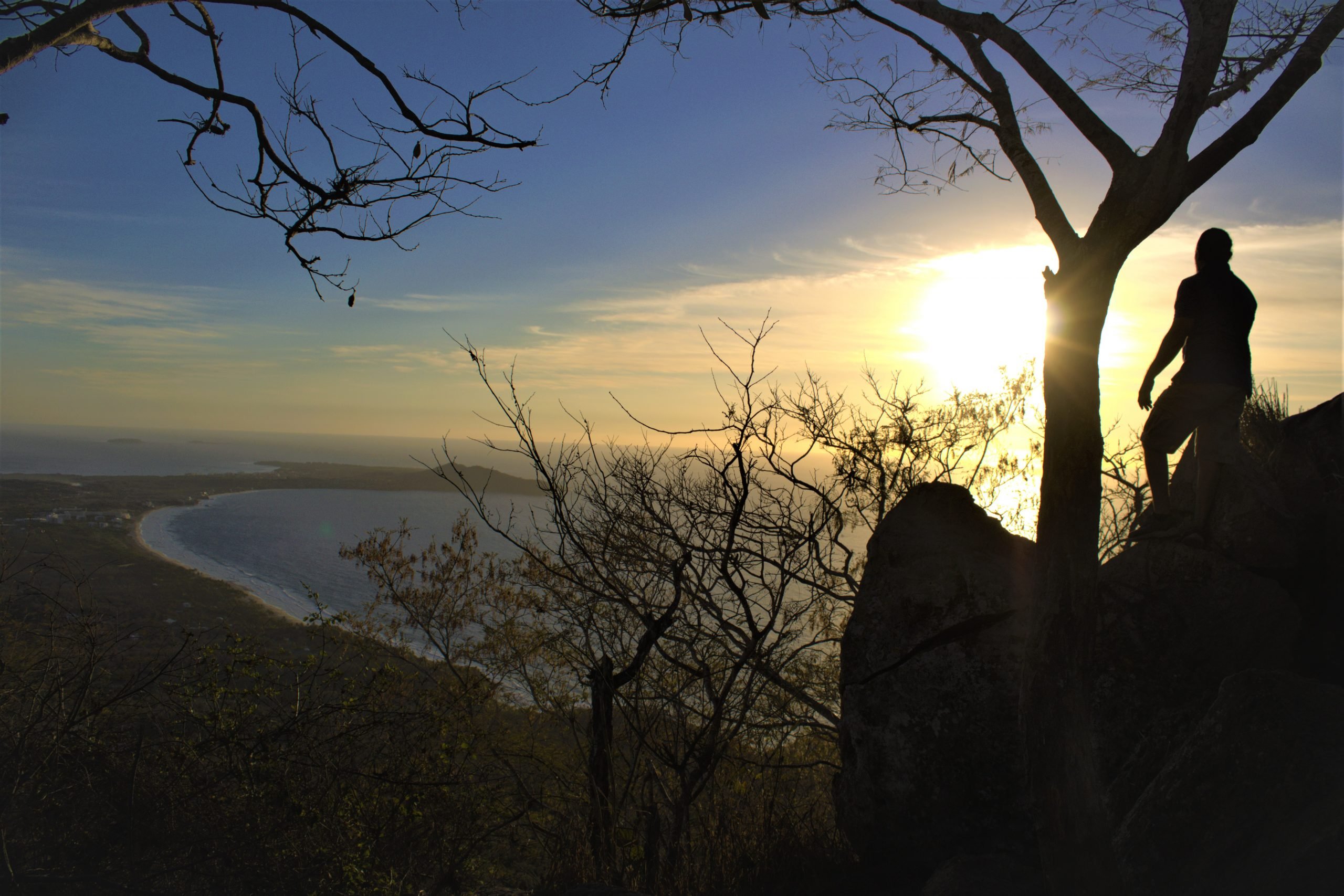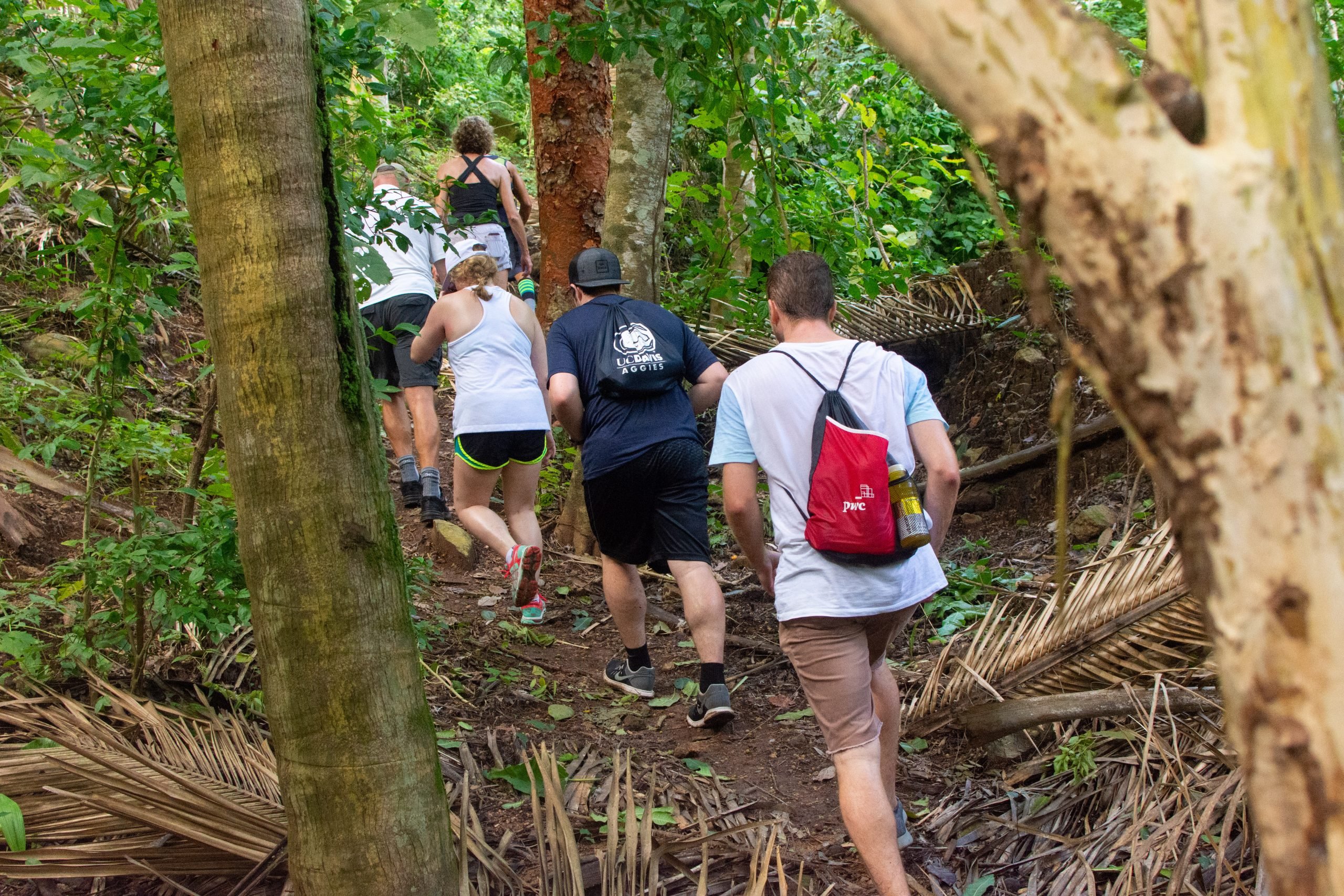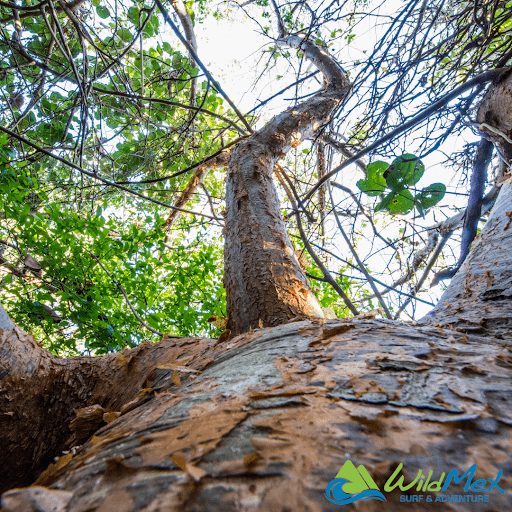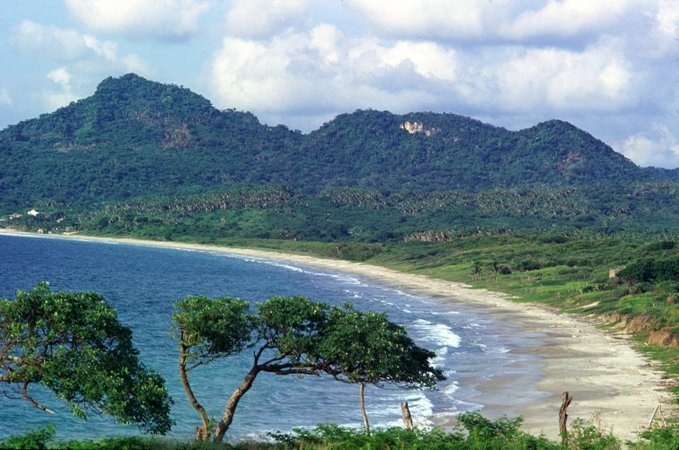Hiking Trails in Punta Mita and Sayulita Area
A Visitor’s Guide to Trees to see on Hikes in Sayulita and Punta Mita
Hikes in Sayulita

Hikes in Sayulita
Hikes in Sayulita
Our jungle hike in San Pancho will start from the beautiful beach of Sayulita.
Spring is HERE, and even though you may still be shoveling snow in some areas of the world and spending your evenings sipping warm beverages by the fireplace, it’s time to plan your Spring travel itinerary to make the most out of what spring has to offer here in Mexico.
If you’re a nature admirer, you’d know that there’s no better place to enjoy Spring than in the Nayarit area and specifically Punta de Mita and Sayulita. (Nayarit is a small state in western Mexico between the forested mountains of the Sierra Madre Occidental and the magnificent Pacific Ocean!). Many people are yet to discover the nature in these destinations, so, you can say they’re two natural gems waiting to be discovered (by you, of course, on your next trip!) 😉
Explore jungles where jaguars roam, crocs creep, and exotic tropical wildlife sing and dance within the vicinity of beautiful hidden beaches and epic sightseeing hikes in Punta Mita and Sayulita. The soothing ocean breeze, warm sun, and colorful landscapes here offer the perfect setting for you to explore, relax and live W I L D. Whilst the breathtaking 360-degree views you can enjoy hiking Monkey Mountain in Punta Mita *by gosh* put the cherry on top!
What To Expect On Your Hikes in Sayulita and Punta Mita Trails?

Malpaso beach and its incredible views are one stop in our jungle hike in San Pancho with Wildmex
With Wildmex, there’s never a slow day… unless you want one. With our jungle hikes in San Pancho, Sayulita, and Punta Mita you’ll get the chance to hike along shady paths, scramble up rocks, pass an abundance of flora and fauna, and emerge onto rocky outcrops with mesmerizing views of the surrounding jungles, beaches, and towns. We can undoubtedly say that our fun-filled hikes will ensure a trip you’ll remember for a lifetime!
But if there’s one thing you’ll absolutely love to see on the hiking trails in Sayulita, it’s the magnificent trees here surrounding the trail.
Interested in finding out more about what you may see? Keep reading!
Forest Ecosystem In Punta Mita and Sayulita
Hiking trails in Punta Mita and Sayulita are accentuated because of the area’s diverse ecosystem. Punta Mita is a Selva Caducifolia or deciduous forest with trees that turn beautiful shades during the Autumn season and shed their leaves in the dry season. Whilst Sayulita is a mix of both the Selva Caducifolia and the Evergreen Jungle. The Evergreen Jungle is made up of rainforest trees, grand, green, and luscious. It’s a pure treat for the eyes, and attracts a wide range of bird and animal species, making this spot your calling if you are truly a nature person.
If you plan to take a tour on land, you can ride a mountain bike through the lush, unspoiled Sierra Madre Forest in Punta Mita, or you can explore the diverse landscape on foot along the vivid hiking trails in Sayulita.
A diverse ecosystem has created a tapestry of natural wonders in Punta Mita and Sayulita, with nature’s handiwork visible in every acre of these beautiful zones. From colorful marine and wildlife to magnificent flowers and trees – you can find everything here.
Here are some wonderful trees you’ll spot when hiking in the Punta De Mita and Sayulita area:
Cohune Palm

The Cohune Palm jeweled with the cohune seeds are a sight to see during the jungle hikes in San Pancho
The Cohune Palm is a single-stemmed, evergreen palm, also sometimes known under the names of Attalea Cohune, Rain Tree, American Oil Palm, Corozo Palm, or Manaca palm). This species of palm tree is native to Mexico and parts of Central America. Its growth is relatively
slow, but the tree can reach a height of more than 20 meters eventually. The cohune palm is used in the production of cohune oil and its nut can be used as a variety of vegetable ivory.
Coconut Palm

The coconut palms at the Sayulita beach mark the start of the Hiking Trails in Punta Mita with Wildmex
The Coconut Palm is a beautiful and majestic feather palm often cultivated as an ornament in many areas and also for its edible fruit – the coconut! This Palm can grow up to 30 meters tall and exist as true cultural icons for the tropics.
Papelillo

The Papelillo tree’s twists and multi-branches are a true delight for the eyes during our hike in San Pancho
The Papelillo tree grows rapidly up to 100 feet tall into a twisting, multi-branching tree that flourishes in both wet season and dry. A true delight for the eyes!
The English name for this is the Paper Bark Tree – the English name graphically describes the red bark that peels off in paper-like shreds.
Papelillo trees grow all over the Mexican Pacific coast and surround most of Sayulita, so you can expect to see plenty of them along our hiking trails in Sayulita.
Ceiba

The thorny Ceiba are a one of a kind trees that you encounter during jungle hikes in San Pancho
Ceiba is a tropical tree native to Mexico, South America, and a few other areas. This tree can reach up to 200 feet in height, towering over our other rainforest vegetation.
The Ceiba is an amazing tree in its adolescence, even if it does look a bit daunting with its distinctive large thorns on the trunk. Why would a tree have such creepy-looking spikes on it? Well, when the tree is young it has yet to fully develop its roots system, therefore having spikes prevents animals from damaging the semi-delicate developing trees.
Ceiba trees grow in wet evergreen and dry semi-deciduous tropical forests covering Punta Mita and Sayulita. The tree has a broad, flat crown of horizontal branches – a magnificent giant indeed!
Papelillo trees grow all over the Mexican Pacific coast and surround most of Sayulita, so you can expect to see plenty of them along our hiking trails in Sayulita.
Parota

Experience the wide Parota in any of our hikes in Punta Mita and feel that humbling feeling from its hugemongous spreading crown.
The Parota is one of the largest trees in the dry forest area of Mexico and Central America, reaching up to 12 feet in diameter and 40m in height with a huge spreading crown.
Such trees are a common sight in the Punta de Mita and Sayulita area – and we’re not complaining. After all, they’re hugeeeee and bloomin’ beautiful!
The Parota is used here in Mexico as an interesting option for sustainable wooden furniture and is also believed to provide medical benefits. In Mexican folk medicine, the sap is thought to aid illnesses such as the flu and bronchitis.
Spot this tree by looking for an expansive, often spherical crown, and its curiously shaped seed pods!
Primavera

The Primavera is dotted with pink or yellow flowers that come along sparsely during the Hiking Trails in Punta Mita
Primavera is a large rainforest canopy tree with relatively smooth whitish bark and showy pink or yellow flowers in large panicles-clusters.
The primavera tree is used in hot weather gardens worldwide, especially in regions with a definite division between dry and wet seasons, like the Punta Mita and Sayulita areas.
Amapa

Spot the Amapa on your hike in Sayulita by its outstanding bright yellow and pink flowers
Amapa is one of the flashiest trees in the tropical deciduous forest surrounding Punta Mita and Sayulita.
This type of tree flowers for about two weeks per flush and may have two or more flushes per year. What a lovely gift these beautiful flowers are to see on a sunny Spring day here in Mexico!
It is unusually long-lived for a tropical tree, living up to 300 years! It grows between 15 to 50 feet tall with a straight trunk that is usually unbranched to about half the tree’s height.
Spot this tree on your hike in Sayulita by its outstanding bright yellow and pink flowers!
Strangler Fig

Your Hike in Sayulita is incomplete if you don’t click a picture with the Strangler Fig which is truly unique being true to its name.
The strangler fig is undoubtedly one of the most visually striking trees you’ll ever see in the rainforest or anywhere else. Named for their pattern of growth upon host trees, which often results in the host’s death. The “strangling” growth habit is an adaptation for growing in dark forests and jungles where the competition for light is intense.
Lucky for you, there are plenty of Stranglers to be seen in and around Sayulita and Punta de Mita. So, keep your eyes open as you walk through the jungle hikes in Sayulita here and you’ll be able to spot a Strangler Fig easily!
Capomo

The Capomo tree is known for its ability to grow in all types of climates, and its seed Capomo, which is classified as a superfood!! In fact, even its leaves are edible.
You’ll find an abundance of Capomo trees in the Punta Mita and Sayulita area, so don’t forget to try its seeds (nuts) and leaves (which can be eaten like spinach).
The Capomo nut is used as a unique brewed coffee substitute. This superfood coffee alternative looks, tastes, and smells like coffee while boasting countless health benefits.
You can spot this tree within the hiking trails in Sayulita and within the best hikes in Punta Mita too! Just look out for its distinctive nuts.
You can spot this tree within the hiking trails in Sayulita and within the best hikes in Punta Mita too! Just look out for its distinctive nuts.
The Last Ramble

Views of Sayulita on the return hike in San Pancho will leave you in awe and yearning for more
There’s nothing more exciting than seeing the species you’ve only seen or read about on the Internet, experiencing the magnitude of the fauna, and connecting with mother nature at her finest – in the flesh!
You’d be happy to know that you can experience this excitement, once you sign up for a jungle hike in the Punta Mita and Sayulita areas with Wild Mex.
If you’re not already signed up, enquire here about a wild tour with one of our expert hiking guides and get to know the ins and outs – from the glorious Parota trees to beautiful Amapa flowers, you get to witness it all.
Until then, keep your spirits and expectations high, because our back garden won’t disappoint!
With love and peace,
WildMex
